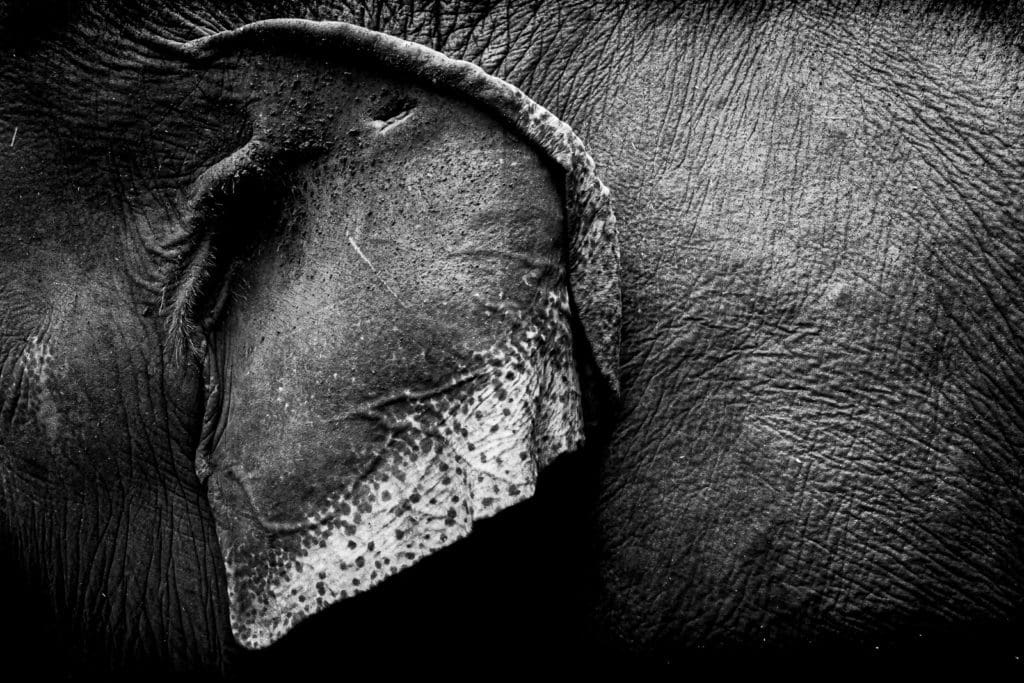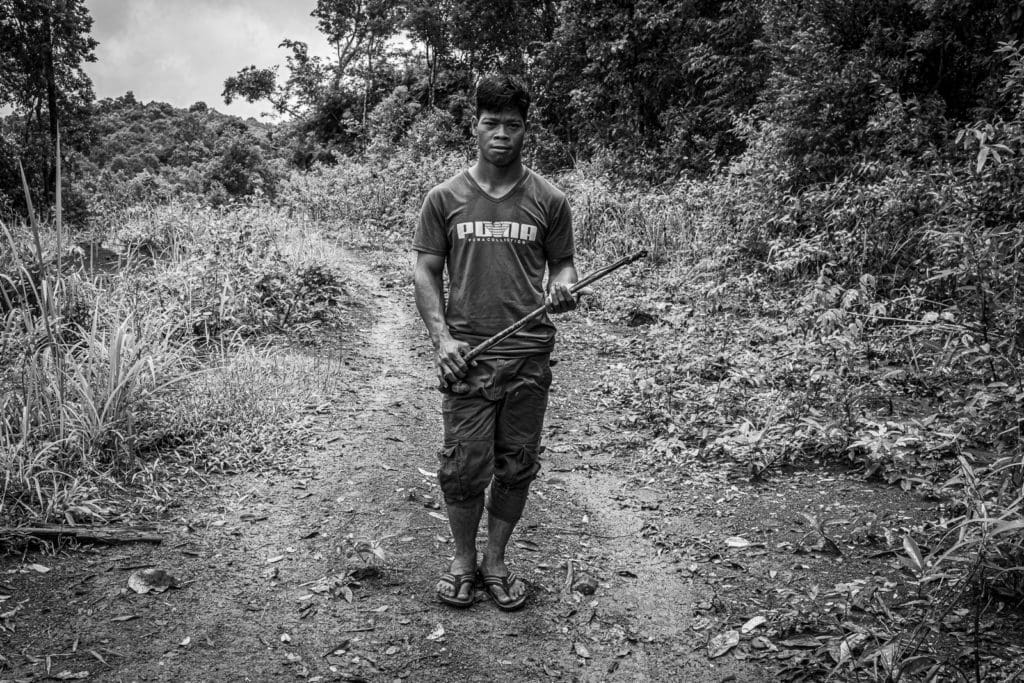“I put my hand on an elephant’s thick skin, convinced I could feel its roughness. But, I only caught its softness among the thick hairs that covered it without continuity. I felt the warmth of its body as I watched my hand move, following the rhythm of its quiet breathing.
Inebriated by that sensation, I found myself enraptured in the deep wrinkles of that soft, thick skin, staring at them as if they were paths and rivers, and routes drawn on an ancient map capable of revealing the mysteries of a world of which, I, was only an unexpected – if tolerated – visitor.
What had she thought when she saw me?
A pale man in awe of even looking her straight in the eyes – deep abysses as dark as they are immense but at the same time reassuring – clumsy in moving around the edges of his jungle, careful not to slip with muddy feet, the same colour as his beloved Mahut’s skin. What had she thought when she followed my hand with that deep eye?
Had she caught my quickening pulse? Had he realised that, in that instant, I was losing myself in her wrinkles?”

Mondulkiri Jungle
The south-east of Cambodia, far from the magnificent temples that are a legacy of the Khmer Empire and today a destination for package holidays, is an immense region of mostly wild highlands and medium-sized mountains, coloured in many shades of green, rich in mighty waterfalls, home to an incredible variety of animals, plants, and human diversity. Mondulkiri – which in the Khmer language means the Centre of the Mountains – as well as marking a natural border with Laos and Vietnam, is also the easternmost, wildest and least densely populated region of Cambodia. In the 1960s and 1970s, the land was tormented by the weapons trade from North to South Vietnam. Certain parts of this jungle are still no-go due to many mines and unexploded bombs. Representing, in fact, a dramatic environmental issue for the forest inhabitants who, not too sporadically, find themselves involved in explosions and mutilations. In the best of cases.
The jungle and forests that cover the remote heights of Mondulkiri are inhabited by various ethnic groups, including the Bunong – also known as the Pnong – an animist population who have lived in symbiosis with nature and jungle spirits for over two thousand years. The Bunong follow a code of behavior centered on respect for the resources this land grants them. They are the custodians of an ancient tradition that allows them to care for elephants, who are considered full members of the community here. The Bunong shape their lives and the rhythm of their existence on the preservation of these extraordinary animals.
The mahut-which in Hindi means “one who rides the elephant “-are their guardians and janitors. Throughout their lives they care for them, passing the task from generation to generation to their own child, sibling, grandchild, until the elephant’s life cycle comes to an end, and the elephant is in fact considered a member of this extended family by the passage of time.
“Once we arrived in Sen Monorom, the main town in Mondulkiri, after many hours of journey and little comfort, one of the most complicated things was getting in touch with the Bunong. After a ritual stop at the local police station, where we were sharply denied their cooperation, I decided to try my luck among the drivers of the many tuk-tuks there, hoping to retrieve a local contact who could lead us to a village in the forest. “

A future that must be preserved
Over the past two decades, the practice of land grabbing – the sale by private individuals or governments of large lots of forest to foreign companies in exchange for money – has become widespread. Fortunately, in recent years, awareness of this problem has been raised, and attempts are being made to curb it by finding a sustainable development system for those who inhabit this area. But, unfortunately, one of the central government’s (timid) actions has been to consider the Bunong as a ‘protected ethnic group’ and their work with elephants as a ‘national interest’.
While it was helpful to reduce the impact of land grabbing at the turn of the century, this decision opened the door to many foreign projects for preserving and protecting Bunong villages – and elephants. But unfortunately, not all of them are positive. To recover the funds necessary to sustain the operational infrastructure, many of these have turned into tourist agencies, becoming, in reality, tour operators for wealthy tourists.
In the centre of Sen Monorom, we meet Cham, a Khmer boy with good English, excellent French and a few Italian songs in his head. He tells us the story of Nol, his childhood friend, a Mahut who takes care of the elephants in the forest with his family. Chan and Nol grew up together but spoke two different dialects: one Khmer, the other Bunong. Their dialogue, formed over time, interweaves these two different languages.
With his tuk-tuk, Chan leaves the town centre to get onto the main road and, after several kilometres, cuts across a muddy, dirty road into the forest.
Nol’s house is wooden, simple and very spartan, and seems to glow from the reflection of the surrounding red earth and the incessant rain. It is a calm situation where rain on wooden planks accompanies the scene like a soundtrack.
We set off in the direction of the emerald-green forest. Above our heads a few eagles can be glimpsed flying over the jungle, as if to protect it. No noise can be heard, only the rain pelting the road and making our path uncertain on the weak soles of my sandals.
After an indefinite time, Nol disappears into the dense forest. Chan tells us to wait quietly. He also tells us that elephants decide who can meet them. It is not to take for granted that they will let themselves be approached by strangers or be touched. A timeless time passes, and from the heart of the forest, she moves closer. She advances slowly through the foliage of the trees guided by her Mahut in an almost liturgical silence. The forest embraces them and witnesses their silent understanding. A few sounds out of Nol’s mouth is dialogue with Kropun, a 38-year-old young elephantess whom Nol’s family has been caring for all her life.
Kropun was already there when he was born and will spend her entire life with him. And she will still be with him when she sees him off to the land of the bunong spirits. Kropun will continue to live, cared for by Nol’s son, until she decides to fall asleep in the Forest of the Immortals, in Mondulkiri, Cambodia.


